Blizzard Entertainment is the high lord of any genre it touches. No one can claim to have a better real-time roguelike than Diablo, StarCraft II has few challengers for quality or player base despite being in development for almost seven years, and World of Warcraft remains the juggernaut against which all MMOs and RPGs are compared. There are a lot of factors behind this, but perhaps one of the biggest is that Blizzard cannot, does not and will not leave good enough alone.
WoW has been starting to show its age. Its graphics, while still serviceable and even beautiful, don't hold up against some of the latest entries on market. Nowhere has this been felt more than in the areas that the game has had since day one: the four continents of Azeroth, Kalimdor, Khaz Modan and Lordaeron. Aside from a few minor changes, these areas have been in near stasis for close to four years. Some quest chains were incomplete for the past two years, and many more have been impractical to complete due to raid guilds moving on to the newest content, leaving two-thirds of the game abandoned. The old lands weren't even fully fleshed out or accessible; numerous incomplete areas, sealed off from view, have existed in the game since it launched.
No more, seems to be Blizzard's line with the latest expansion, World of Warcraft: Cataclysm. Rather than open up a new, 10-zone continent, Blizzard decided to focus on revising everything in the old world and building up the earliest levels. Every lesson it's learned since the development of these old zones has been applied, with the goal of adding excitement to the slog from level one to 60.
The plotlines that make up Cataclysm ultimately center on one character. Just as the previous expansion, Wrath of the Lich King, was ultimately about the fallen paladin, Prince Arthas Menethil, Cataclysm centers on the fallen dragon, Neltharion, who was corrupted by the Old Gods into Deathwing the Destroyer, the greatest threat Azeroth had ever seen.
Awakening from a long sleep after his schemes against the first version of the Alliance in Warcraft II failed pathetically, Deathwing decided that before he destroyed everything, he needed to devastate his enemies. A huge rush of tidal waves, earthquakes, lava streams, volcanoes and general mayhem later, Deathwing succeeded in causing ruin across the entirety of the old world. Then he gathered the highly splintered but generally villainous Twilight Cult and got them to unify in worshipping him, and he set schemes in motion in four key locations to finish what he'd started.
Fortunately, his schemes have not gone unopposed. Unfortunately, the right hand is still incapable of speaking to the left. Varian Wrynn, king of Stormwind, has taken up the reins of military leader of the entire alliance, and he's not good at putting the greater good above his hatred of the Horde. Meanwhile, Thrall, the peace-seeking messiah who successfully unified opposed races, has abdicated leadership of Orgrimmar — and thus the Horde — to Garrosh Hellscream, son of Grom Hellscream. Just like his father, Garrosh is extremely warlike and brash, and has alienated the other Horde races. The result leaves several neutral factions trying to get people to unify against Deathwing as the war between the Alliance and Horde grows deeper.
It is in this environment that the Cataclysm's side effects bring new allies to the two beleaguered factions. The Alliance is now associated with the old kingdom of Gilneas, based on their mutual hatred of the Undead. Unfortunately, the human kingdom of Gilneas is now the werewolf (Worgen) kingdom of Gilneas, thanks to the experiments of the mad Archmage Arugal. They seem sane enough, and King Gann Greymane is far more sensible than the Alliance leader. Meanwhile, a large Goblin association, the Bilgewater Cartel, driven from its home island of Kezan by Deathwing, has decided to renew old ties with the Orcs in the name of protecting itself — and its lines of profit.
The two new races fit into WoW quite nicely. There's no major, messy retconning of existing series lore. Both get eight classes (the new max), two unique abilities — Goblins get rocket packs, while the Worgen get a simple dash attack — and two unique starting zones apiece.
The Worgen zone starts several years before the game, with the player experiencing the first invasion of Worgen in Gilneas. You aid the nation's king in attempts to save the people — only to be bitten by a man who turns into a Worgen before your eyes. You end up pinned in the cathedral and transform off-screen. A trapper captures you, explaining that you have turned into a feral beast. After an unknown length of time, you are saved from madness, but then the Forsaken invade, a tidal wave swallows up the battleground on which you were standing, some quests, haven in a safe town in Gilneas … and then the Forsaken attack again. Your character's flights result in meeting Night Elves (Worgen who have regained sanity with Elven help), and you join King Greymane to face the Forsaken and retake Gilneas City.
The Goblin portion is decisively more upbeat at the outset, casting you as a Goblin rising through the ranks, leader of the Kaja'Cola company and inventor of a drink that gives Goblins (mostly bad) ideas. You have a hot rod, a hotter girlfriend and you're even on a team for the popular local sport, footbomb. (You promptly kick the footbomb into the inactive volcano. Oops.) Fortunately, everyone blames Deathwing, who happens to show up at that moment and sends everyone fleeing from the island. Everyone finds that the diabolical Trade Prince Gallywix has the only ship off the island and controls all the money. After some thieving and insurance scamming, you've paid your ticket ... to slavery. You're saved by an Alliance ship blowing the boat — to smithereens. After rescuing the Horde war chief, Thrall, the player nearly takes down Gallywix, who surrenders and maintains rule under the Horde's watch. As a result, your character is pulled into the Horde's service.
Both of these plots, along with the new Troll and Gnome starting plots, feature the same phasing techniques and tricks first introduced with the Death Knight plot in Wrath of the Lich King, but now, the plots can affect the very geometry of areas. In addition to increasingly creative quests and one pre-rendered cut scene each, the surprisingly punchy plots ensure that your character feels like a hero in his origin story. It's a wonderful improvement over the tired start areas in Durotar and Dun Morogh.
Cataclysm changes almost every zone to some extent, shuffling zone levels around and twisting things in various directions. The vast canyon of the Thousand Needles is now a vast, flooded canyon, with no Horde or Alliance outposts, meaning that no old quests remain unadjusted. The old zones don't merely have new quest lines, though. There are not as many minigames in the 1-60 game as in the zones in Northrend or the new zones, but Blizzard tries to throw in clever twists every so often to keep things from getting stale. In particular, many more quests involve custom items to do things, and there seems to be at least one minigame in every zone, including a rather fully realized Plants vs. Zombies minigame. (This must've had PopCap's permission, since the reward is a sunflower that sings the PvZ theme.)
Additionally, the new Archaeology secondary skill seems to have been designed to encourage players to fight gankers. The Archaeology skill lets the character collect fragments from ruins and fossil dig sites all around the game world (including Outland and Northrend), and the fragments turn into various unique rewards. While it doesn't meet the original ambition, Archaeology is worthwhile for high-end PvE players. There's a handy side effect of 85th-level players in almost every PvP-enabled zone, which helps discourage potential gankers.
The new zone content of Cataclysm may seem rather short; there are only five zones for high-level play when compared to Wrath of the Lich King's 10 and Burning Crusade's eight. Blizzard ensured that all five zones are on par with the fully detailed, phasing-heavy epic story lines from the very last zones of Wrath of the Lich King.
Initially, players choose between Mount Hyjal and Vash'ir. Mt. Hyjal begins with the player nearly getting torched by Ragnaros, elemental lord of fire and the final boss of the original game. This forces the player to fight the Twilight Cult from atop the mountain by healing a burnt forest and allying with several major characters to take out Ragnaros. Meanwhile, Vash'ir has the character joining the Horde or Alliance fleet to conquer some newly surfaced territory next to Stormwind. The land is sunk by a Kraken, leading to a fight with the Naga beneath the water's surface. You attempt to stop the Naga from invading the realm of the lord of water elementals, Neptulon.
After this comes Deepholm, the elemental plane of Earth where Deathwing had been hiding since Warcraft II. None of the denizens suspect him although he's made of fire and steel is constantly grafted onto him to prevent him from exploding. This zone focuses on the player trying to repair a central pillar in Deepholm. Aside from containing the portal in and out of the realm, it will cause both regions to collapse if it takes much more damage. This plot is a tad sluggish but provides several interesting characters and some unexpected surprise twists.
Next up is Uldum, the best zone of Cataclysm and the only zone to involve two largely separate plots. The "A" plot centers on the largest new race of the expansion, the cat-like Tol'vir, who have guarded Uldum since the days of the Titans. Some have joined Deathwing in hopes of returning to their original, living stone forms. The "B" plot is essentially a giant parody of the first "Indiana Jones" movie; the twist is that the ark, if opened in the right context, destroys the planet. Uldum is the most humorous realm (introducing the hilariously annoying Pygmy race) and has the most instances (four, including one raid) of any zone in the expansion.
Finally, Cataclysm's leveling ends in the Twilight Highlands. Once an unused part of the old Wetlands zone, the Twilight Highlands are now a vast plain that is caught in a three-way war between the Dragonmaw Clan of Orcs, the Wildhammer Clan of dwarves and most of the Twilight Cult, which is led by Cho'Gall, an ogre mage who has been a threat since the original Warcraft. This zone has several short plots, including an Old God-like beast that pulls a nasty nightmare sequence on the player. There's a quest assisting what appears to be an isolated group of Red Dragons, but it turns into helping the Red Dragons' leader, Alexstraza, attempt to take out Deathwing. This zone is almost a letdown compared to the amazing plot in Uldum. It feels like several disconnected threads, but it's still on par with the best zones from Wrath of the Lich King.
Traditionally, World of Warcraft's strong point has been considered to be how it opens up once the player hits the current maximum level, with strong and distinct PvP and PvE scenarios becoming available. The PvP game is shaken up with the introduction of three new battlegrounds. While the Battle for Gilneas and Twin Peaks battlegrounds are variants of Arathi Basin and Warsong Gulch, respectively, the new PvP zone, Tol Barad, introduces a new variant of the attack/defend gameplay introduced in Wrath's Wintergrasp zone and Isle of Conquest battleground. It gives the attacking team a limited time to capture three points, and the defenders must survive, harried by the attackers' access to siege vehicles. All three new battlegrounds are clearly built with an understanding of the strengths and weaknesses of the old environments, and they provide for a much wider experience for players who like objective-based PvP.
Objective-based play is now the core of WoW PvP. Although it's the source of the greatest rewards, Arenas are reduced in importance because of the new Rated Battleground system. Essentially, players now have Arena ratings in the three brackets and a fourth rating for their victories and failures in special variant battlegrounds. This new realm of play is extremely competitive and sticks to one of the major battlegrounds — except Wintergrasp and Tol Barad — each week. This rapidly shifting metagame keeps the PvP scene less stale. Also mixing things up is the fact that PvP gear is the highest-level gear in the game right now. It's optimized for PvP, but it's also quite strong in PvE, so many PvE players are actively involved in PvP, too.
There are as many small-group dungeons for level 85 as there were in early Wrath of the Lich King — sort of. While there are only seven new dungeons to Wrath's nine at launch, two of the classic dungeons from the original WoW now feature a Heroic difficulty. This changes the dungeons sufficiently as to essentially count as new dungeons. These dungeons are much harder than anything from Wrath or even most of Burning Crusade, with many of the bosses in these dungeons being more complex than many of the raid bosses in Wrath. Unfortunately, the first major snag of Cataclysm comes here because most players haven't adjusted to the increased difficulty. If you do not have a saint's patience, you should never use the dungeon group finder because the odds are extremely low that you'll manage to form a group that's capable of completing the dungeon. At the very least, work with people on your server to build up part of a team.
There are four raid dungeons in Cataclysm, with a total of 13 bosses. All are designed to be played with your choice of a 10- or 25-player team. Blizzard's taken that part to heart by replacing the instance-save system from Wrath with a "Which bosses have you taken out?" lockout for each week. It tunes the bosses to be just as hard with 10 or 25 players, so the choice of group size is largely dependent on player preference. (This also means that you can take out one dungeon's bosses, alternating between 10-man and 25-man difficulty for each.) The results are pretty impressive and are a worthy extension of the challenge of Heroics.
World of Warcraft: Cataclysm brings the excitement of a new expansion to much of the game and provides some exciting and engaging high-level content. If your account has lapsed, Cataclysm makes it worth the renewal cost. The expansion content raises the bar and re-establishes Blizzard as the reigning king of traditional MMORPGs.
Score: 9.5/10
More articles about World of Warcraft: Cataclysm


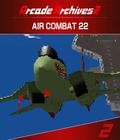

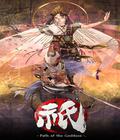
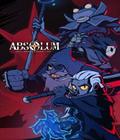

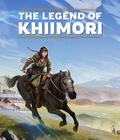
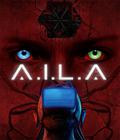


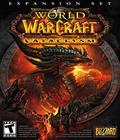 WoW: Cataclysm brings sweeping changes to the world of Azeroth, with two new playable races, new levels of power, challenging quests, dungeons in all-new zones, and dramatic changes to familiar aspects of the game in the wake of a world-shattering disaster.
WoW: Cataclysm brings sweeping changes to the world of Azeroth, with two new playable races, new levels of power, challenging quests, dungeons in all-new zones, and dramatic changes to familiar aspects of the game in the wake of a world-shattering disaster.















































